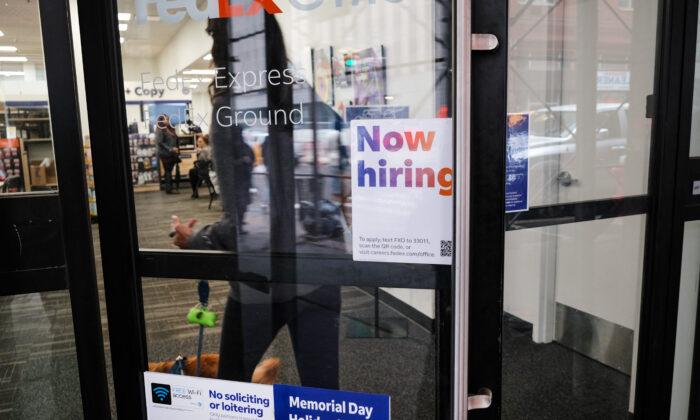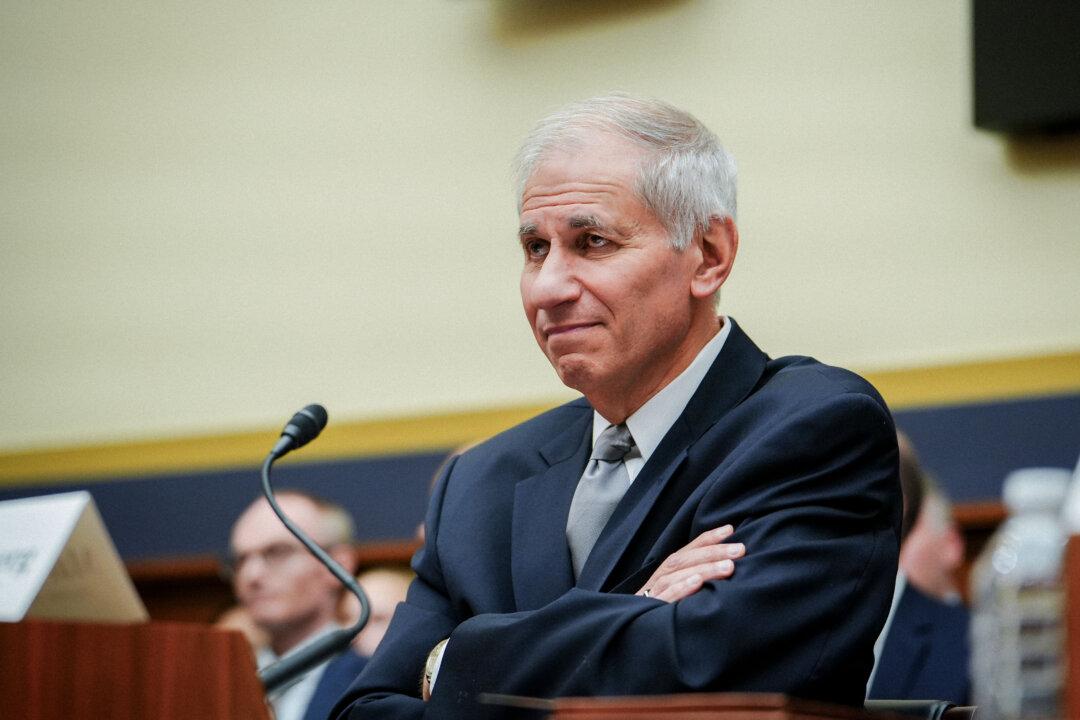The U.S. economy is expected to have added 180,000 jobs in April, according to consensus estimates. If the forecasts are accurate, this would represent the smallest monthly gain since December 2019.
In recent weeks, signals have indicated that the national labor market is beginning to cool, a trend that would please an inflation-fighting Federal Reserve.
“There are some signs that supply and demand in the labor market are coming back into better balance,” Fed Chair Jerome Powell told reporters during the post-Federal Open Market Committee policy meeting press conference on May 3.
The unemployment rate also edged lower in March, dipping to 3.5 percent, the lowest level in 50 years. Economists anticipate a slight jump to 3.6 percent in the May 5 Bureau of Labor Statistics report.
Market observers will keep an eye on wage growth to determine if labor costs are cooling.
Average hourly earnings slowed to 4.2 percent in March from 4.6 percent in the previous month. It represented the smallest boost in annual average hourly earnings since June 2021.
“The slowdown in pay growth gives the clearest signal of what’s going on in the labor market right now,” ADP Chief Economist Nela Richardson said.
Powell estimates that wage increases need to be closer to 3 percent “to be consistent with inflation over a longer period of time.”

Labor Market Indicators
Other data beyond the monthly NFP support economists’ expectations that the red-hot labor market is being doused by the Fed’s tightening cycle and broader economic uncertainty.“Finance, both traditional and digital, are grappling with rate increases and the potential for lower consumer spending, just as Retail and Consumer Manufacturers are. We’ve also seen large banks fail recently, which will mean a more cautious approach in the sector going forward,” Andrew Challenger, a labor and workplace expert and senior vice president of Challenger, Gray & Christmas, said in the report.
Year-to-date, the Challenger figures show that the technology sector announced 113,914 job cuts, followed by retail (36,115) and manufacturing (19,116).
A Positive Outlook?
Overall, the latest metrics suggest a positive outlook for the jobs report, especially if the numbers are revised for previous months.The April jobs numbers could offer evidence of a soft landing or early signs of a recession, according to Dean Baker, a senior economist at the Center for Economic and Policy Research.
The one area he plans to monitor is the labor force participation rate.
Although the rate has improved in the past four months, “there is likely little upside left to participation” for two reasons.
“Overall participation remains depressed primarily due to demographic shifts,” he said. “Return-to-office mandates could adversely affect women’s labor force participation.”
In March, the labor force participation rate climbed to 62.6 percent, the highest since March 2020.
Could the U.S. labor market grind to a halt in the coming months?
Powell suggested that it’s possible for job openings to fall without unemployment increasing.
“It’s possible that we can continue to have a cooling in the labor market without having the big increases in unemployment that have gone with many prior episodes,” he said. “And that would be against history. I fully appreciate that would be against the pattern.”





